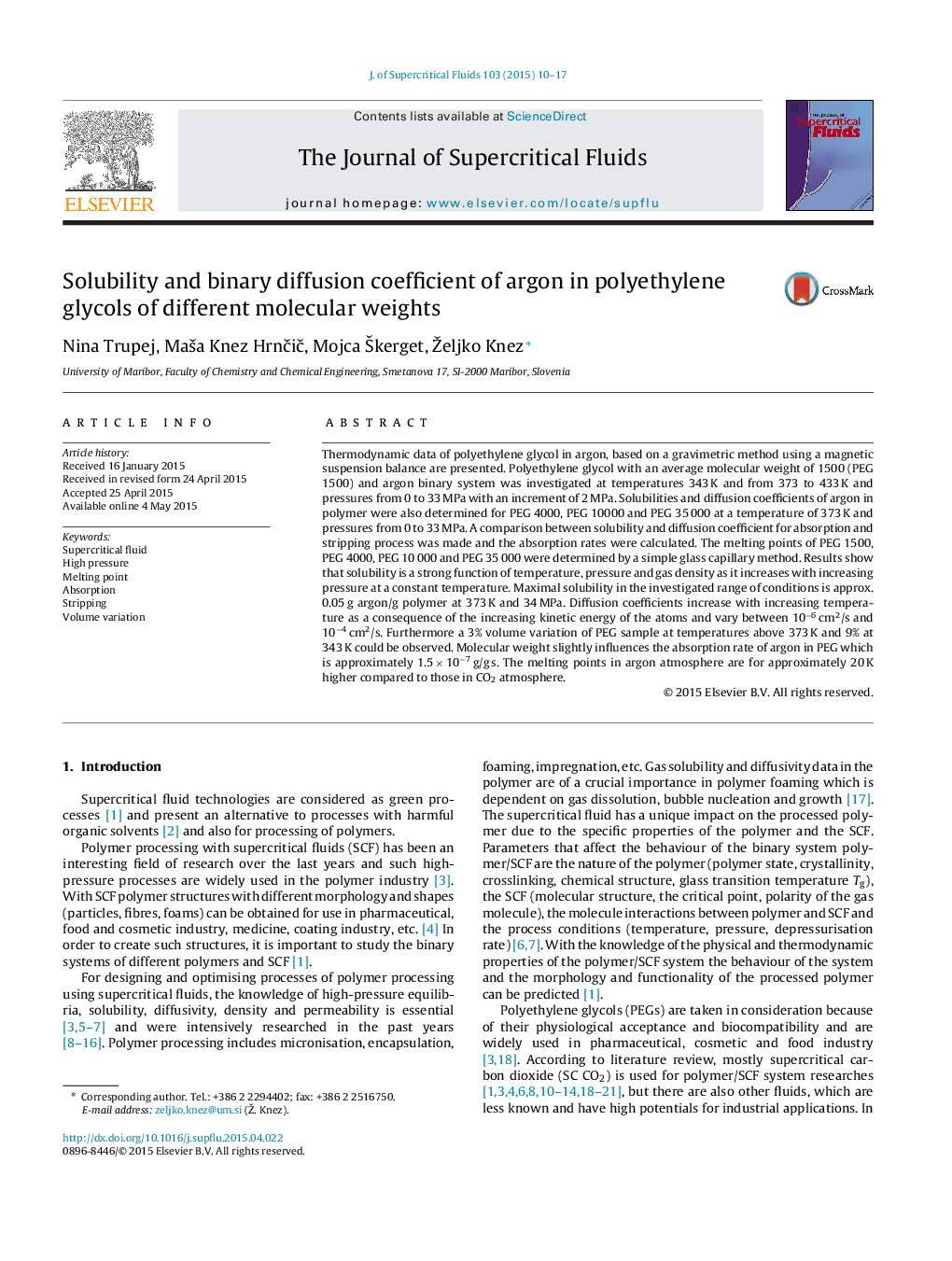| کد مقاله | کد نشریه | سال انتشار | مقاله انگلیسی | نسخه تمام متن |
|---|---|---|---|---|
| 230218 | 1427374 | 2015 | 8 صفحه PDF | دانلود رایگان |
• Solubilities, diffusion coefficients and absorption rates of argon in PEGs.
• Temperature range from 373 to 433 K and pressure range from 0 to 30 MPa.
• Melting points of different PEGs in argon determined by glass capillary method.
• A comparison of literature data for solubility, diffusivity, and melting points.
Thermodynamic data of polyethylene glycol in argon, based on a gravimetric method using a magnetic suspension balance are presented. Polyethylene glycol with an average molecular weight of 1500 (PEG 1500) and argon binary system was investigated at temperatures 343 K and from 373 to 433 K and pressures from 0 to 33 MPa with an increment of 2 MPa. Solubilities and diffusion coefficients of argon in polymer were also determined for PEG 4000, PEG 10000 and PEG 35 000 at a temperature of 373 K and pressures from 0 to 33 MPa. A comparison between solubility and diffusion coefficient for absorption and stripping process was made and the absorption rates were calculated. The melting points of PEG 1500, PEG 4000, PEG 10 000 and PEG 35 000 were determined by a simple glass capillary method. Results show that solubility is a strong function of temperature, pressure and gas density as it increases with increasing pressure at a constant temperature. Maximal solubility in the investigated range of conditions is approx. 0.05 g argon/g polymer at 373 K and 34 MPa. Diffusion coefficients increase with increasing temperature as a consequence of the increasing kinetic energy of the atoms and vary between 10−6 cm2/s and 10−4 cm2/s. Furthermore a 3% volume variation of PEG sample at temperatures above 373 K and 9% at 343 K could be observed. Molecular weight slightly influences the absorption rate of argon in PEG which is approximately 1.5 × 10−7 g/g s. The melting points in argon atmosphere are for approximately 20 K higher compared to those in CO2 atmosphere.
Figure optionsDownload as PowerPoint slide
Journal: The Journal of Supercritical Fluids - Volume 103, August 2015, Pages 10–17
